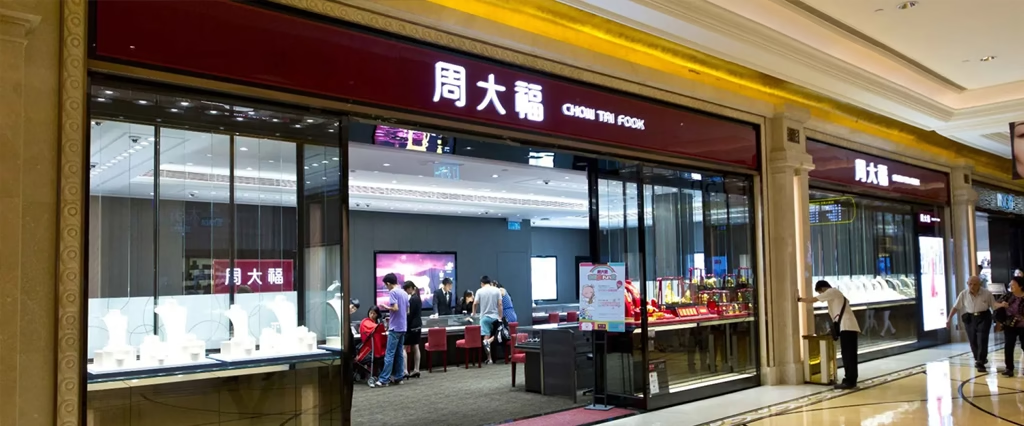The vast, endless expanse of the ocean has always been a symbol of discovery, romance, and escape. It’s a world away from the familiar rhythms of life on land, a place where time seems to slow, and every sunset feels like an event. It is on this shimmering, floating stage that Caryl Capeci, a titan of the jewelry industry, has found her new frontier, Experiential Retail. After distinguished tenures as the CEO of Chow Tai Fook North America and President of the iconic Hearts On Fire, Capeci has taken her formidable talents out to sea, embarking on a new voyage as the Senior Vice President of Fine Jewelry and Watches for Starboard Group, the world’s leading cruise retailer.
Since her appointment in October 2023, Capeci has been on a mission not just to sell jewelry, but to fundamentally reimagine the entire experience of buying it. She is working to transform the floating boutique from a simple point of sale into a destination in its own right—an integral, unforgettable part of the vacation narrative. For Capeci, a cruise ship isn’t just a mode of transport; it’s a unique ecosystem of celebration, leisure, and emotion, presenting an unparalleled opportunity to connect with customers in a way that brick-and-mortar stores can only dream of.
In a recent conversation, Capeci unveiled the philosophy behind this sea change, offering a fascinating glimpse into why people open their hearts, and their wallets, to luxury while sailing the high seas.
From Terra Firma to the Tides: Redefining the Retail Landscape
For a career spent navigating the currents of land-based retail, the transition to the world of cruise ships was a profound shift in perspective. “My whole experience in my career was on land before I got to Starboard,” Capeci admits. Her approach isn’t about discarding the old rulebook, but rather enhancing it with the unique advantages the maritime environment offers. “The approach that we take is really one where we want to take the best in class of retail on land… all the things that we know that are necessary to be exceptional, like great customer service and great visual presentation, great product, but marry that with the unique opportunities we have at sea.”
The most significant of these opportunities, the one that forms the bedrock of her strategy, is the concept of the captive guest.
“I would say the most important one is we have a captive audience,” Capeci states. The term ‘captive’ might initially conjure images of limitation, but in the context of a luxury vacation, it translates to something far more powerful: undivided attention. On land, a customer might dash into a jewelry store on their lunch break, their mind still buzzing with deadlines and errands. The experience is often transactional, hurried, and functional. At sea, this dynamic is inverted.
“Whether it is a three-day sailing, a seven-day sailing, a 10-day sailing, the guests on the ship are really moving in and out of the retail stores through their entire vacation,” she explains. The boutique is not a detour; it’s part of the ship’s central promenade, a space guests pass through on their way to dinner, to a show, or simply while taking a leisurely evening stroll. Time is no longer an enemy but a luxurious commodity. Guests are relaxed, unburdened by the stresses of daily life, and operating in a completely different mindset.
The Psychology of Celebration: Shopping with Emotion
This relaxed state of mind is precisely why buying jewelry on a cruise feels so different. It’s less about a calculated purchase and more about an emotional acquisition. The ship itself is a vessel of celebration. People embark on cruises to commemorate life’s most precious moments: a 25th wedding anniversary, a landmark birthday, a graduation, a hard-earned retirement.
“We have people celebrating all kinds of milestone occasions,” Capeci notes. A desire for a Swiss timepiece or a diamond necklace might have been a distant thought back home, lost in the shuffle of work and family obligations. “That [milestone may have happened] in the last year,” she says, “but when you get on board, you are actually now in this gratification experience.”
The vacation creates a bubble of pure joy and indulgence. Within this bubble, the desire to commemorate the moment becomes palpable. A beautiful piece of jewelry is no longer just an object; it becomes the physical embodiment of the memory being created. It is the sparkle of the Caribbean sun captured in a sapphire, the romance of a Venetian canal reflected in a diamond, the triumphant feeling of an Alaskan adventure immortalized in a rugged, elegant watch.
“You want to commemorate and celebrate why you’re there,” Capeci emphasizes. “And you really use that as an opportunity to take advantage of what you’re seeing and the retail options being presented to you.” The purchase becomes an anchor for the entire experience, a timeless souvenir that will, for years to come, transport the owner back to that specific moment of happiness on the open water.

The Boutique as Entertainment: More Than Just a Store
With a captive and celebratory audience, Capeci and her team are free to craft an experience that transcends traditional retail. The on-board jewelry store becomes a social hub, a source of evening entertainment.
Imagine the scene: The ship has departed from port, and the deep blue of twilight is settling over the ocean. Music drifts from a nearby lounge. Guests, dressed for dinner, meander through the ship’s atrium. With a cocktail in hand, they are drawn into the warm, inviting glow of the fine jewelry boutique. It’s not a shopping trip; it’s part of the evening’s tapestry.
“They are engaging with the people, the staff behind the counter, but they’re also using those retail venues as part of their nighttime entertainment as they walk around with a cocktail,” Capeci says.
Starboard leans into this by creating a calendar of “activations and events.” These aren’t simple sales. They are curated experiences: a champagne reception to unveil a new watch collection, a “meet the designer” event for an exclusive jewelry line, a seminar on the history of diamond cutting, or a trunk show featuring vibrant, exotic gemstones that echo the ship’s tropical itinerary. These events weave the boutiques into the social fabric of the cruise.
This environment also fosters a sense of discovery. On land, shoppers often stick to familiar brands. At sea, with time to browse and experts on hand to tell the stories behind each piece, guests are more open. “You can now see items and discover brands you may not have known before,” she explains. This element of surprise and discovery is a powerful driver. It’s the thrill of finding a hidden treasure, a unique piece that no one else back home will have. This combination of factors “all comes together and creates a unique buying experience, which is really why jewelry is one of the No. 1 categories sold. And it always has been, but it’s really more popular than ever now.”
The Rhythm of the Voyage: The Art of Marketing at Sea
Of course, with a ship full of attractions—from Broadway-style shows and gourmet restaurants to rock-climbing walls and serene spas—luring guests into the boutiques still requires a deft marketing touch. The key is to harmonize with the natural rhythm of the cruise.
“That’s a great question because we’re always rethinking how we speak to them,” Capeci muses. The primary tool is the one already in every guest’s hand: the cruise line’s mobile app. “The No. 1 way we communicate… is through the app,” she confirms. In an age where guests use the app to book everything from shore excursions to spa appointments, retail has seamlessly integrated into this digital ecosystem. A gentle notification might announce a “sparkling hour” at the diamond boutique, or a time-sensitive offer on a featured watch.
Crucially, the marketing efforts respect the guest’s itinerary. “The retail shops on a cruise ship are not open when the ship is in port,” Capeci points out. This is a fundamental rule of maritime retail. While guests are exploring the cobblestone streets of a European city or snorkeling in a coral reef, the on-board shops are quiet. This creates a natural ebb and flow. The day is for adventure on land; the evening is for indulgence at sea.
“We try to coordinate all of our activities in pockets of time where we know the guests might be in between dinners, or between cocktail hour and dinner, where they would naturally be moving through the ship.” The strategy is subtle and intelligent. It’s not about interrupting their vacation but enhancing it, presenting an alluring opportunity at the precise moment they are most receptive.
Under Caryl Capeci’s leadership, the future of cruise jewelry retail is as bright and expansive as the open ocean. It is a vision built on a deep understanding of human emotion, the psychology of celebration, and the unique magic of being at sea. It’s a recognition that a beautiful object purchased on vacation is never just an object—it is a story, a memory, and a timeless piece of a journey that will be cherished long after the ship has returned to shore.



